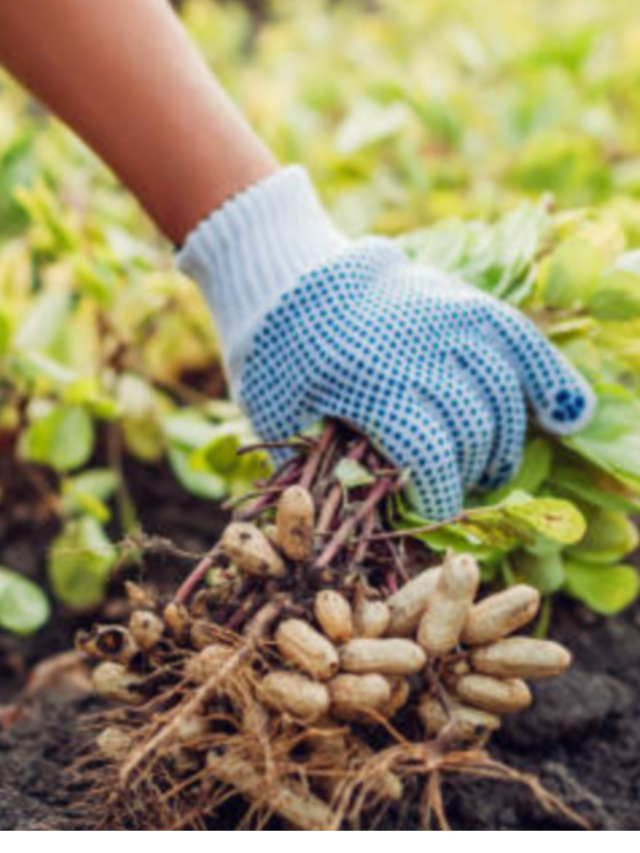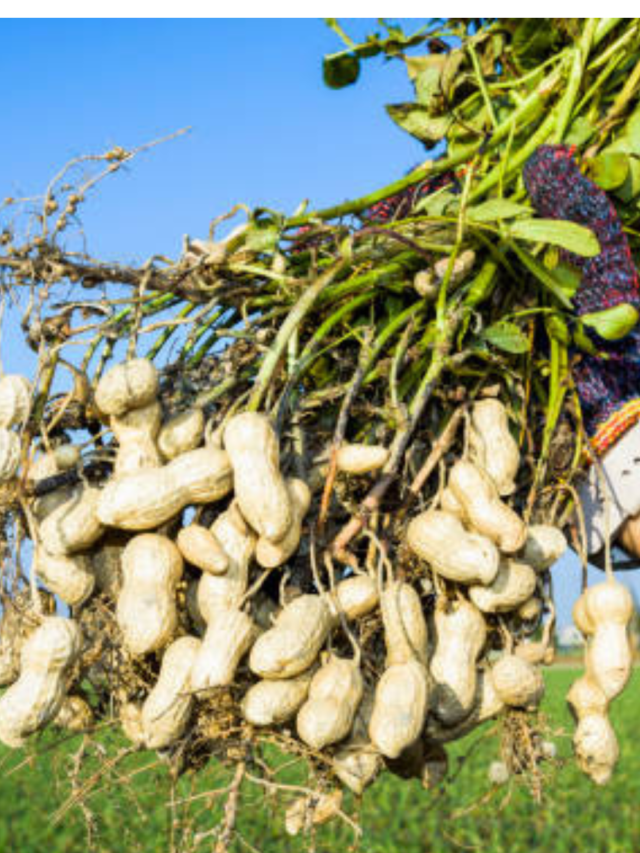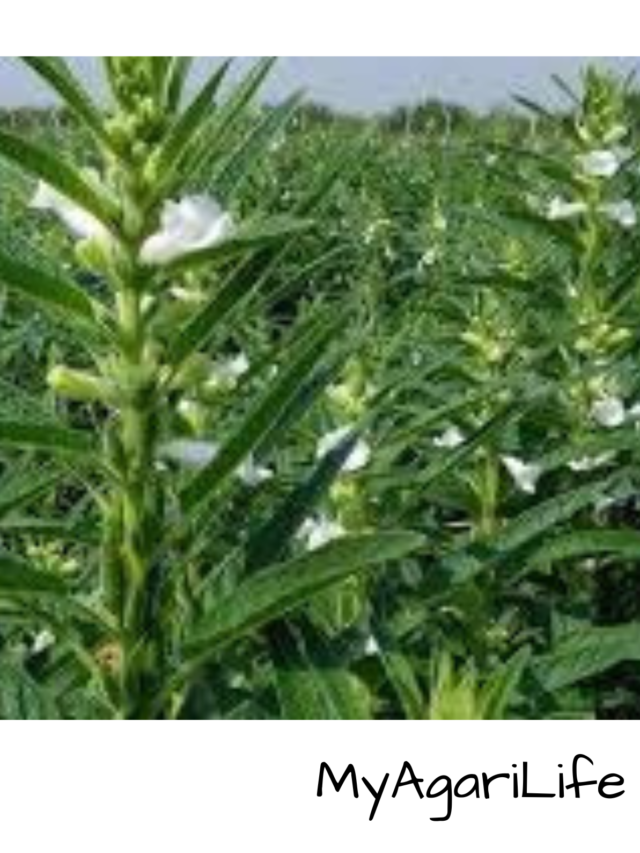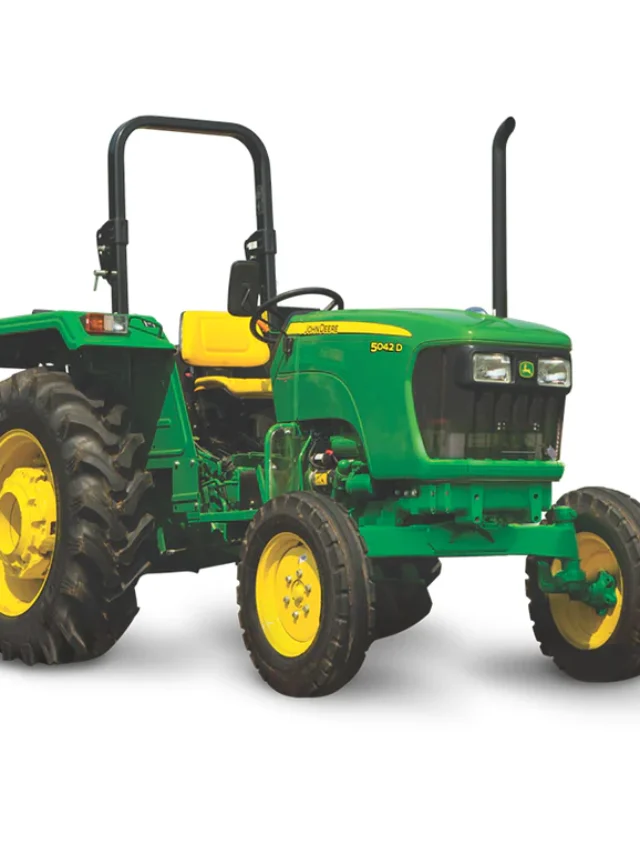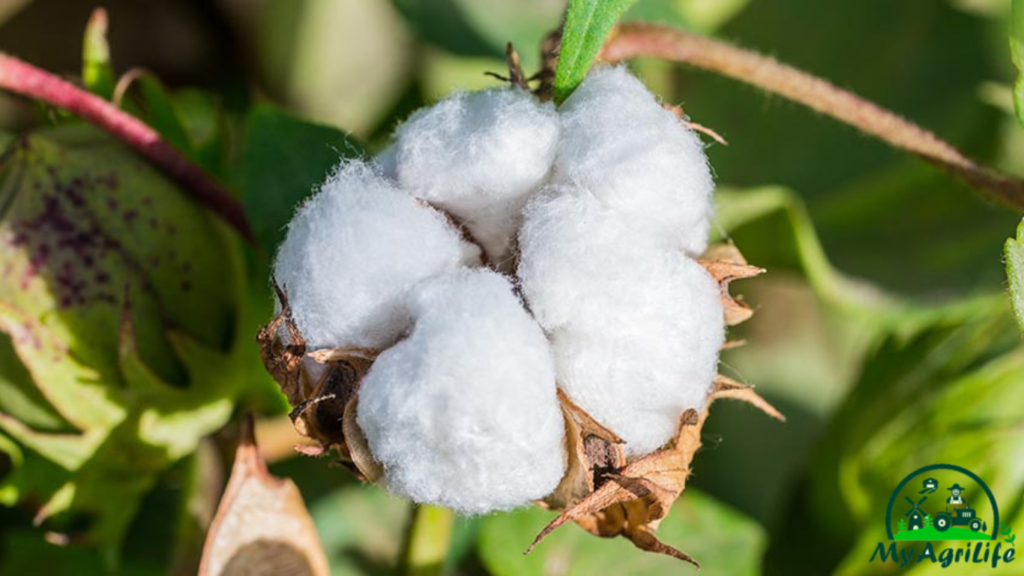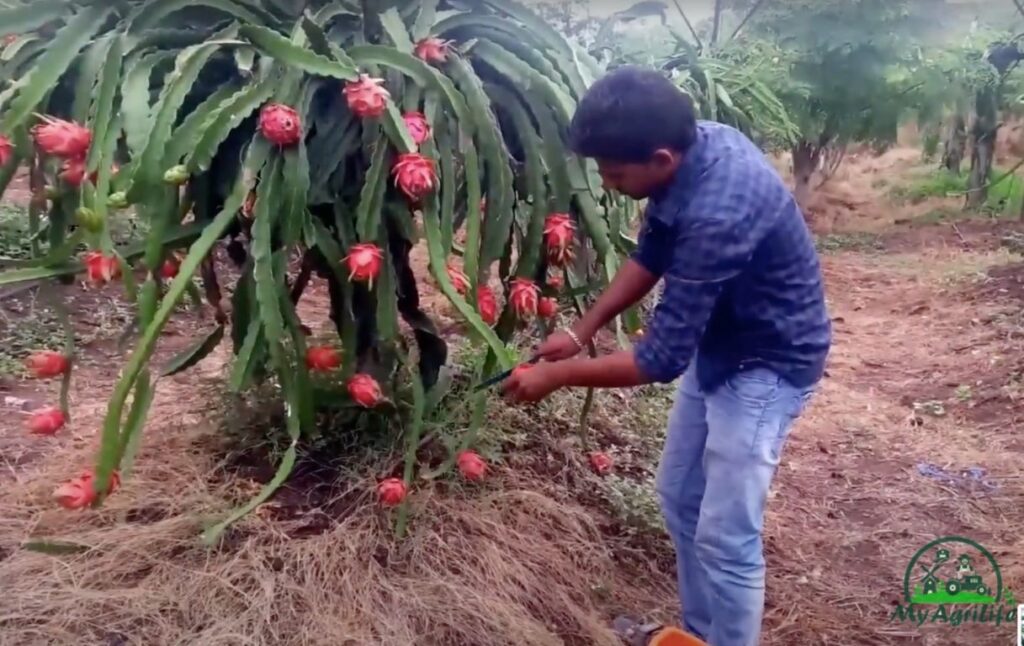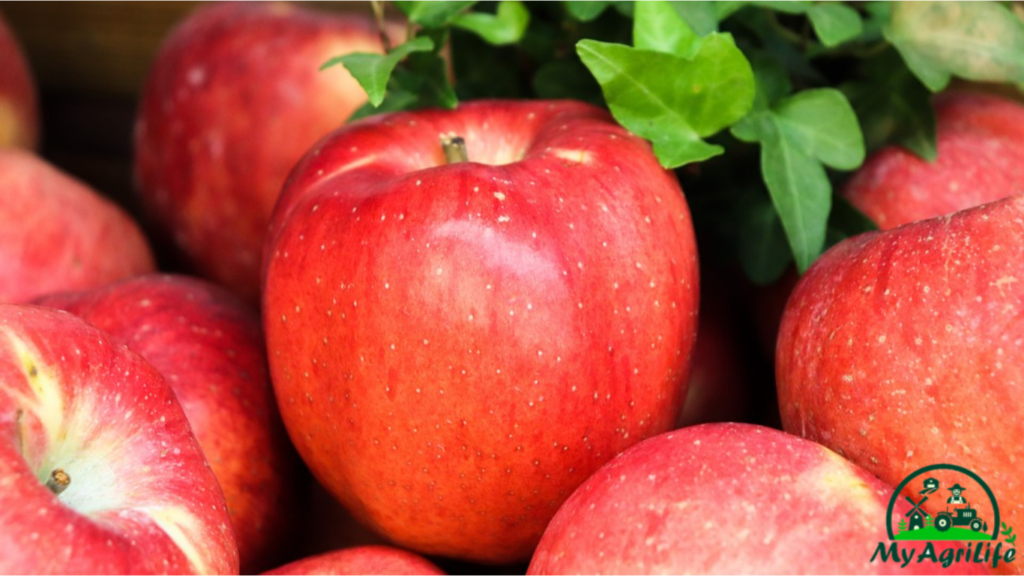
Apple is a fruit that is commonly found and consumed in many parts of the world. It is a round or oval-shaped fruit with a red, green, or yellow skin and white, juicy flesh inside. Apples are high in fiber, antioxidants, and various vitamins and minerals, making them a healthy addition to a balanced diet.
There are many different varieties of apples, each with their own unique flavor and texture. Some popular varieties include Red Delicious, Granny Smith, Gala, and Honeycrisp. Apples can be eaten raw as a snack or used in a variety of dishes, including pies, sauces, and salads.
Apples are also often associated with the saying “an apple a day keeps the doctor away,” which emphasizes their health benefits. Studies have shown that consuming apples regularly can help lower the risk of heart disease, stroke, and certain types of cancer.
Seed Specification Apple
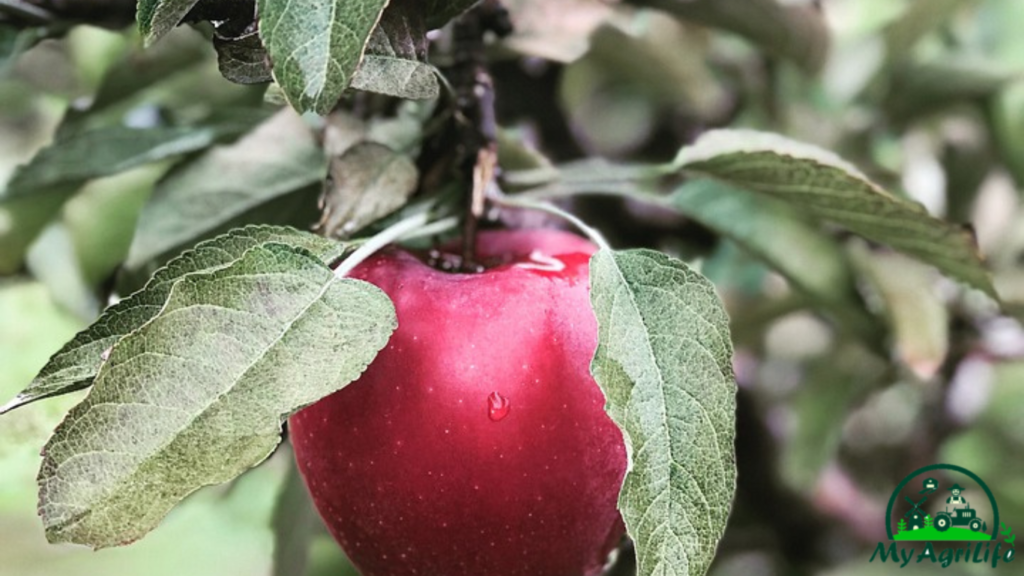
The seed specification of an apple can vary depending on the variety of the apple. Generally, apple seeds are small, brown, and oblong in shape, with a hard outer shell. They are usually around 0.5 to 1 cm in length and 0.3 to 0.5 cm in width.
Apple seeds contain cyanide compounds in very small amounts, which are not harmful to humans when consumed in normal amounts. However, if consumed in very large amounts, apple seeds can be toxic and may cause symptoms such as dizziness, nausea, and vomiting.
When planting apple seeds, it is important to keep in mind that the resulting tree may not necessarily produce fruit that is identical to the original apple. This is because apples are usually grown from grafts or cuttings, rather than from seeds. Additionally, apple trees typically take several years to produce fruit, so patience is required when growing them from seed.
Land Preparation & Soil Health Apple
Land preparation and soil health are important factors to consider when growing apple trees. Here are some key points to keep in mind:
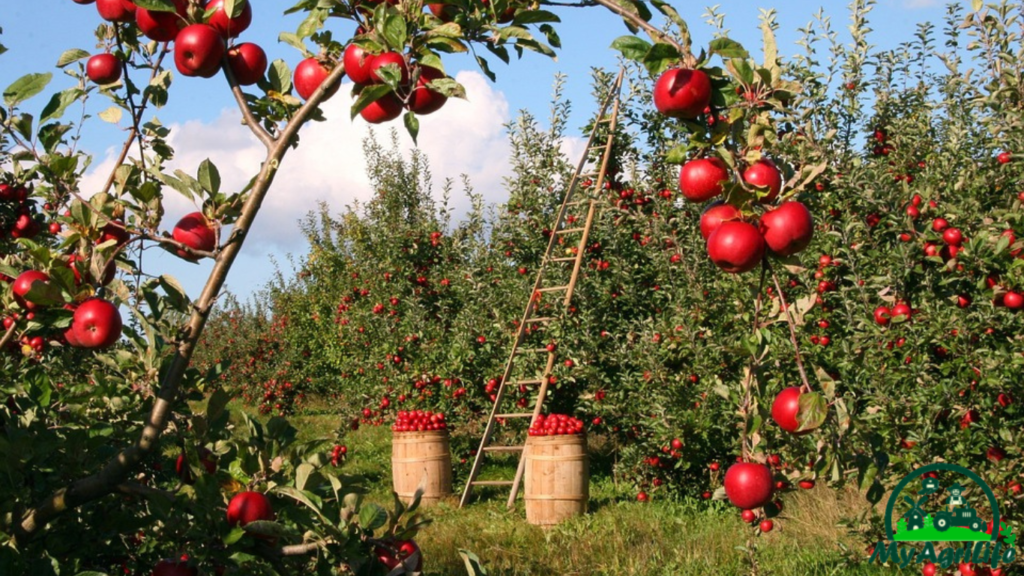
Land Preparation:
1.Choose a site that receives full sunlight and has well-draining soil.
2.Clear the area of any weeds, rocks, or debris.
3.Till the soil to a depth of at least 12 inches to loosen it up and improve aeration.If necessary, amend the soil with organic matter, such as compost or aged manure, to improve its fertility.
Soil Health:
1.Regularly test the soil to determine its pH and nutrient levels, and adjust as necessary.
2.Avoid over-fertilization, as this can lead to nutrient imbalances and water pollution.
3.Practice crop rotation to prevent the buildup of soil-borne diseases and pests.
4.Use cover crops and/or mulch to protect the soil from erosion, maintain moisture levels, and add organic matter.
5.Avoid compaction of the soil by reducing foot and vehicle traffic in the orchard.
Maintaining healthy soil is key to the long-term success of an apple orchard. It helps to support the growth and productivity of the trees, as well as the overall health of the ecosystem.
Crop Spray & Fertilizer Specification Apple
Crop spray and fertilizer specifications for apple trees can vary depending on the specific needs of the variety and the growing conditions. Here are some general guidelines:
Crop Spray:
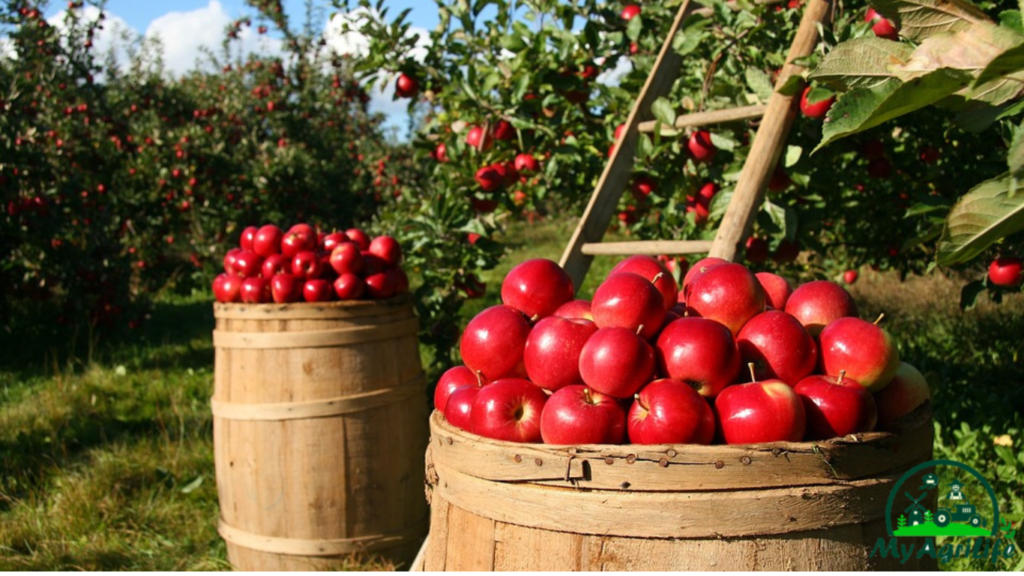
1.Apply insecticides and fungicides as needed to prevent or control pests and diseases, such as apple scab, codling moth, and aphids.
2.Follow the manufacturer’s instructions carefully when applying crop sprays, and wear protective clothing and equipment.
3.Use integrated pest management practices to minimize the use of pesticides and reduce the risk of pesticide resistance.
Fertilizer:
1.Test the soil to determine its nutrient levels, and adjust the fertilizer application accordingly.
2.Apply fertilizers in the fall or early spring before the growing season begins.
3.Use a balanced fertilizer, such as a 10-10-10 or 20-20-20, to provide a mix of nitrogen, phosphorus, and potassium.
4.Apply fertilizers evenly around the base of the tree, and avoid getting it on the leaves or trunk.
5.Consider using organic fertilizers, such as compost or manure, to improve soil health and fertility.
It is important to follow local regulations and guidelines regarding the use of crop sprays and fertilizers, as well as to use these products responsibly and in a manner that minimizes harm to the environment and non-target organisms. Additionally, it is important to properly store and dispose of these products to avoid contamination of soil and water.
Weeding & Irrigation Apple
Weeding and irrigation are important factors to consider when growing apple trees. Here are some key points to keep in mind:
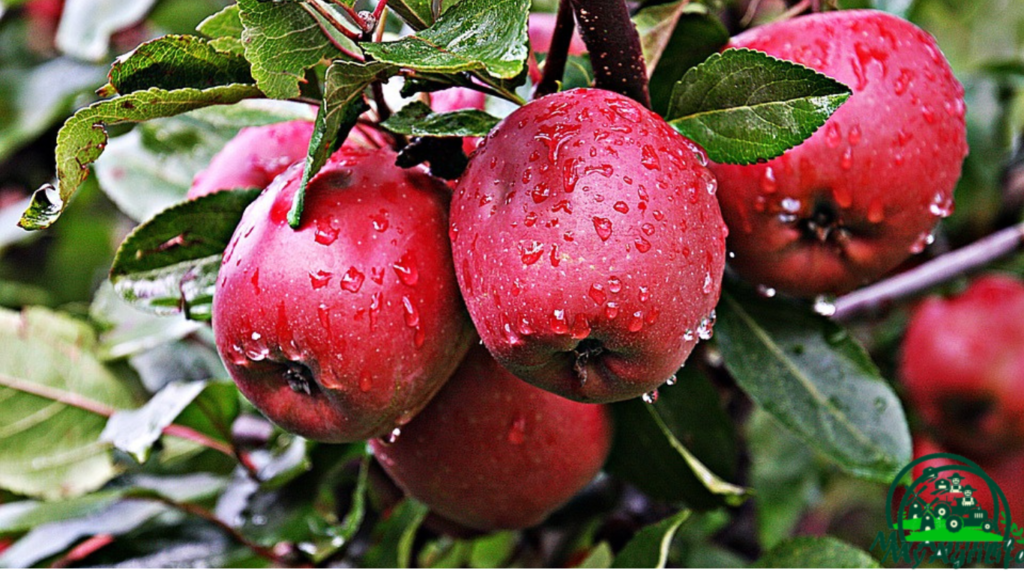
Weeding:
1.Control weeds to reduce competition for nutrients and water.
2.Use manual or mechanical methods, such as hand-pulling or hoeing, to remove weeds around the base of the tree and in between the rows.
3.Use mulch or cover crops to help suppress weed growth and improve soil health.
4.Avoid using herbicides if possible, as they can harm beneficial organisms and pollute the environment.
Irrigation:
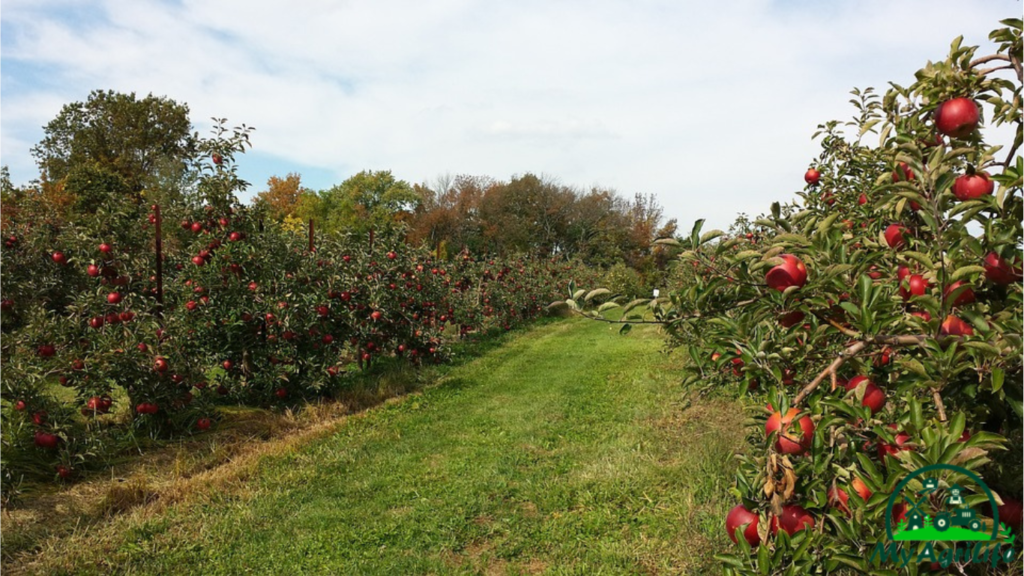
1.Apple trees require consistent moisture, especially during the growing season.
2.Monitor soil moisture levels regularly, and irrigate as needed to keep the soil moist but not waterlogged.
3.Use drip irrigation or soaker hoses to deliver water directly to the roots of the trees.
4.Irrigate in the early morning or evening to reduce water loss through evaporation and minimize stress on the trees.
5.Adjust the amount and frequency of irrigation based on weather conditions and soil moisture levels.
Proper weeding and irrigation practices can help to promote healthy growth and fruit production in apple trees, as well as improve overall orchard health and productivity. It is important to use these practices in a sustainable and responsible manner to minimize the impact on the environment.
Harvesting & Storage Apple
Harvesting and storage are important factors to consider when growing apple trees. Here are some key points to keep in mind:
Harvesting:
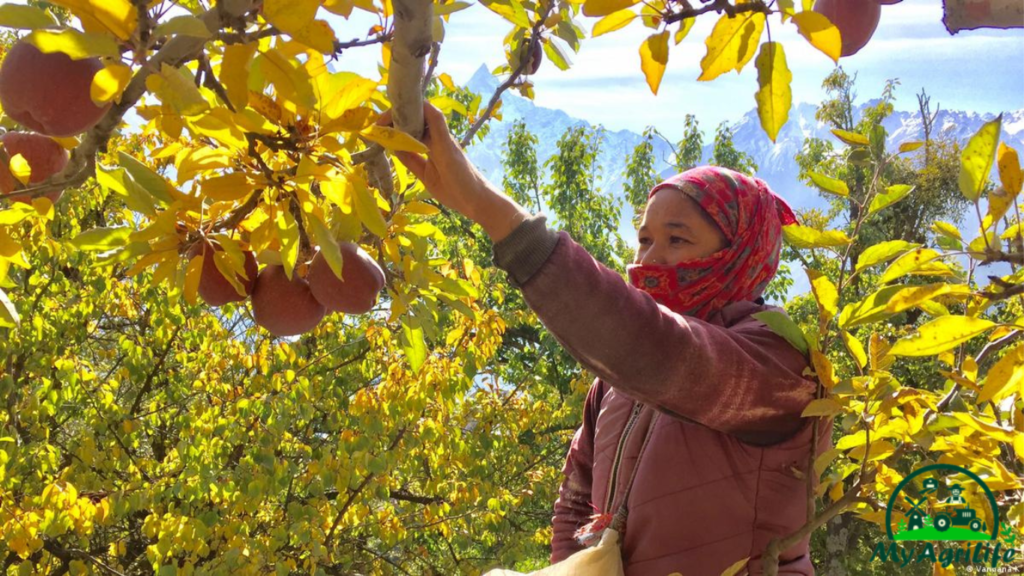
1.Apples should be harvested when they are mature and have reached their full size and color.
2.Different varieties of apples have different harvest times, so it is important to know the specific harvest time for each variety.
3.Apples are typically harvested by hand using picking poles or ladders.
4.Handle the apples carefully to avoid bruising or damaging the fruit.
5.Sort the apples by size and quality, and discard any damaged or diseased fruit.
Storage:
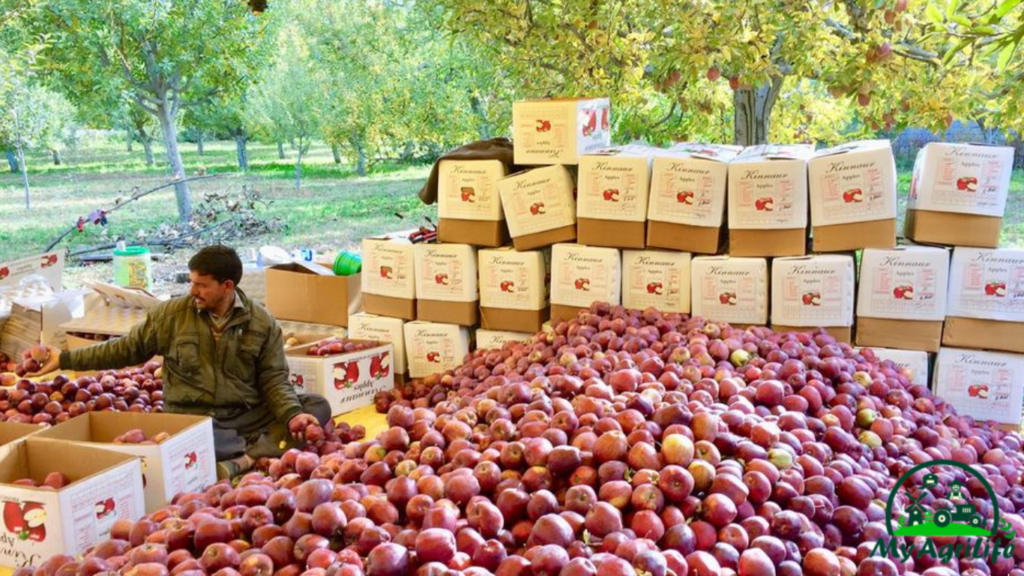
1.Apples should be stored in a cool, dry place to prolong their shelf life.
2.The ideal storage temperature for apples is between 30-40°F (-1-4°C) with a relative humidity of 90%.
3.Store apples away from other fruits and vegetables, as they can produce ethylene gas which can cause them to ripen and spoil more quickly.
4.Wrap each apple in paper or store them in breathable containers to prevent moisture buildup.
5.Check the apples regularly for signs of spoilage or decay, and remove any damaged fruit to prevent contamination.
Proper harvesting and storage practices can help to extend the shelf life of apples and maintain their quality for longer periods of time. It is important to handle the fruit with care and to monitor them regularly during storage to ensure that they are in good condition.
Conclusion
In conclusion, apple farming requires careful attention to several key factors to ensure the growth and productivity of the trees. Land preparation and soil health are important for creating a suitable environment for the trees to thrive. Crop sprays and fertilizers should be used responsibly to control pests and provide necessary nutrients. Weeding and irrigation practices help to reduce competition for resources and maintain consistent moisture levels. Finally, proper harvesting and storage techniques are critical for preserving the quality of the fruit.
By following these guidelines and best practices, apple farmers can promote the growth and productivity of their orchards, while also protecting the environment and ensuring the sustainability of their operations.
